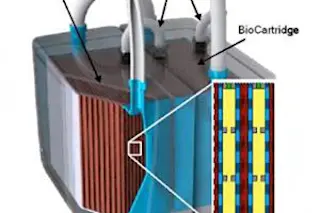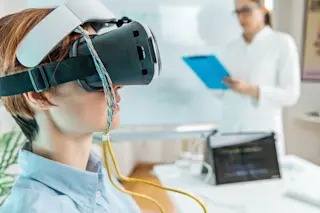Researchers have designed the first artificial kidney small enough to slip comfortably inside the human body, and they say the technological breakthrough could be an enormous benefit for people grappling with kidney disease. Modern medicine can keep patients alive if their kidneys fail via external dialysis machines that filter toxins from their blood, but it's a grueling and imperfect process.
Patients must be tethered to machines at least three times a week for three to five hours at a stretch. Even then, a dialysis machine is only about 13 percent as effective as a functional kidney, and the five-year survival rate of patients on dialysis is just 33 to 35 percent. To restore health, patients need a kidney transplant, and there just aren't enough donor organs to go around. In August, there were 85,000 patients on the U.S. waiting list for a kidney ... while only 17,000 kidney transplants took ...














